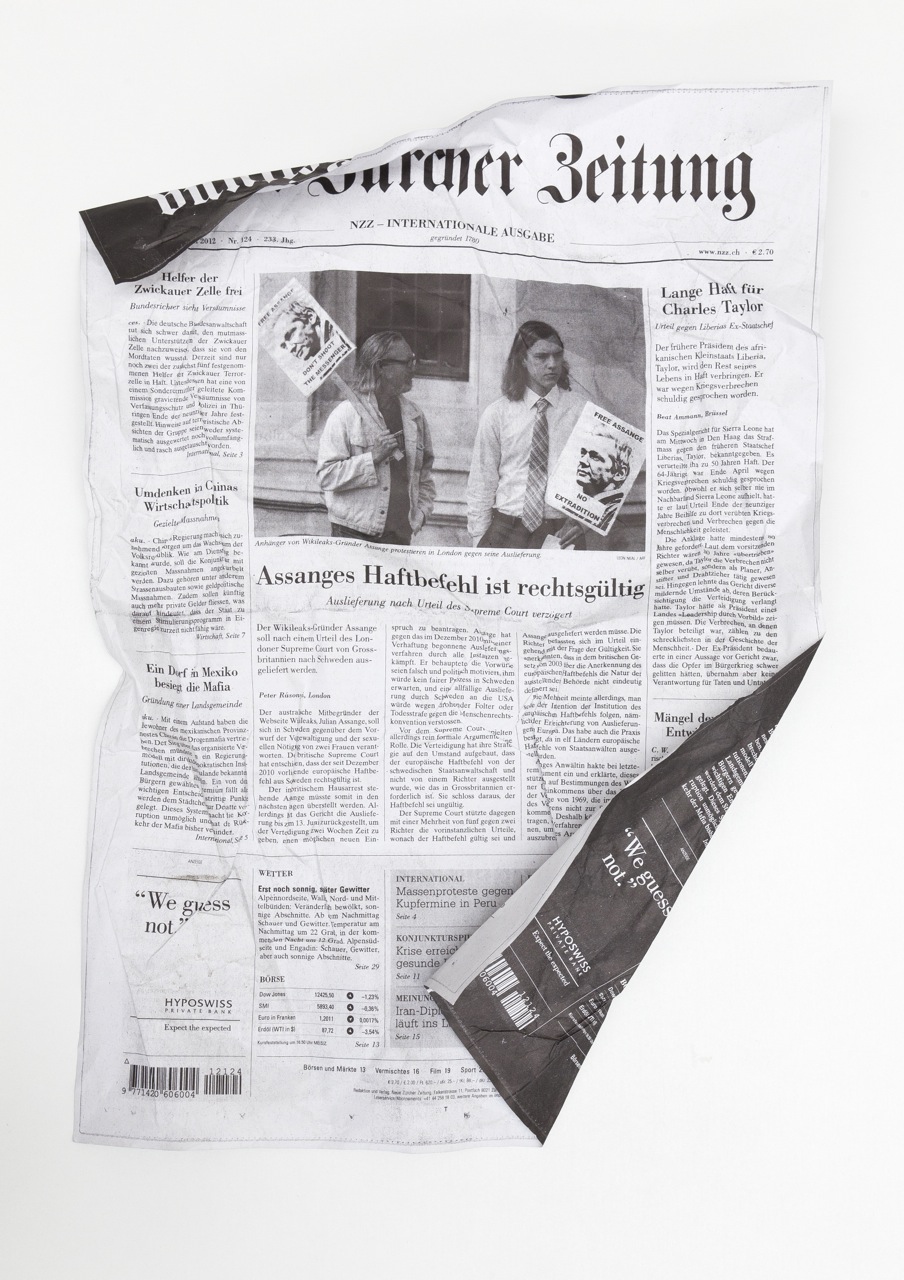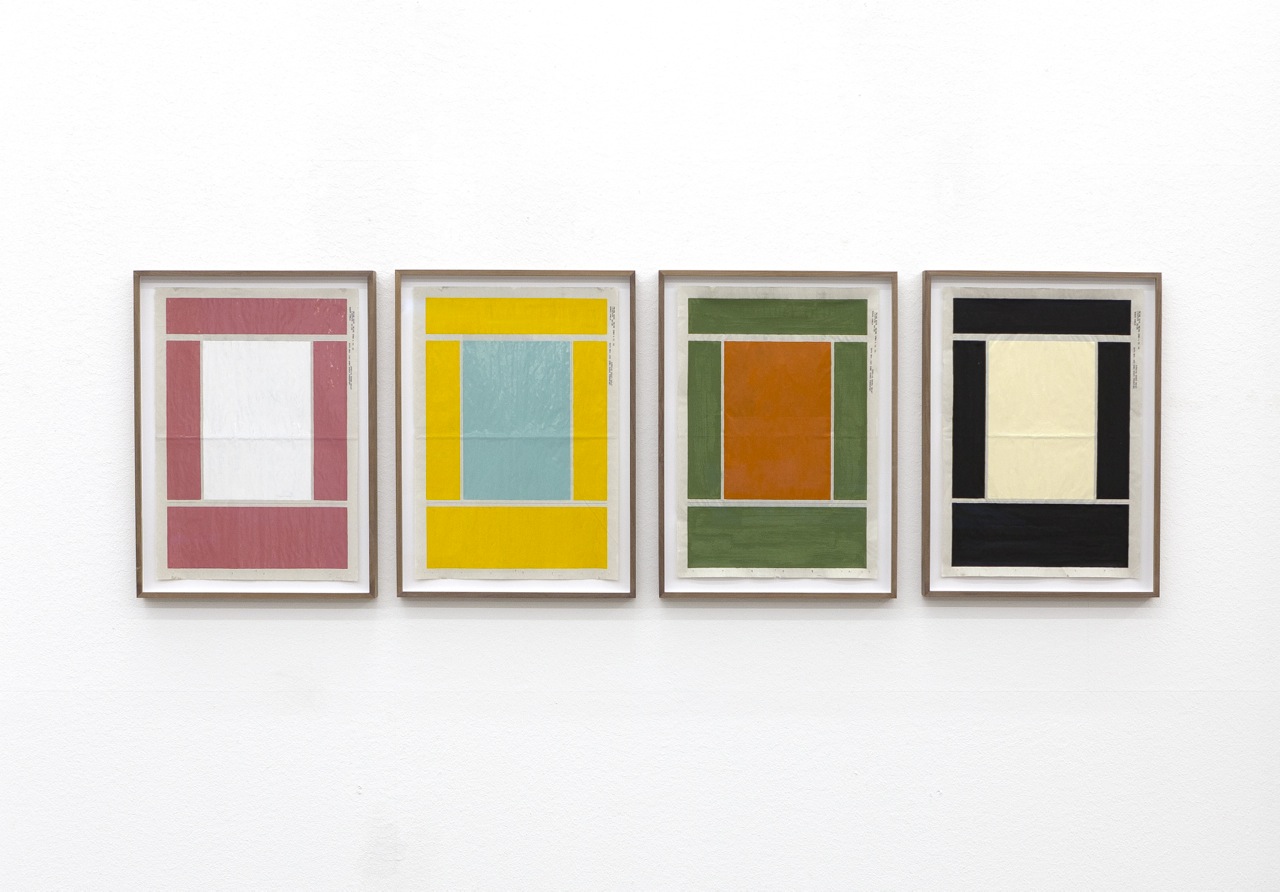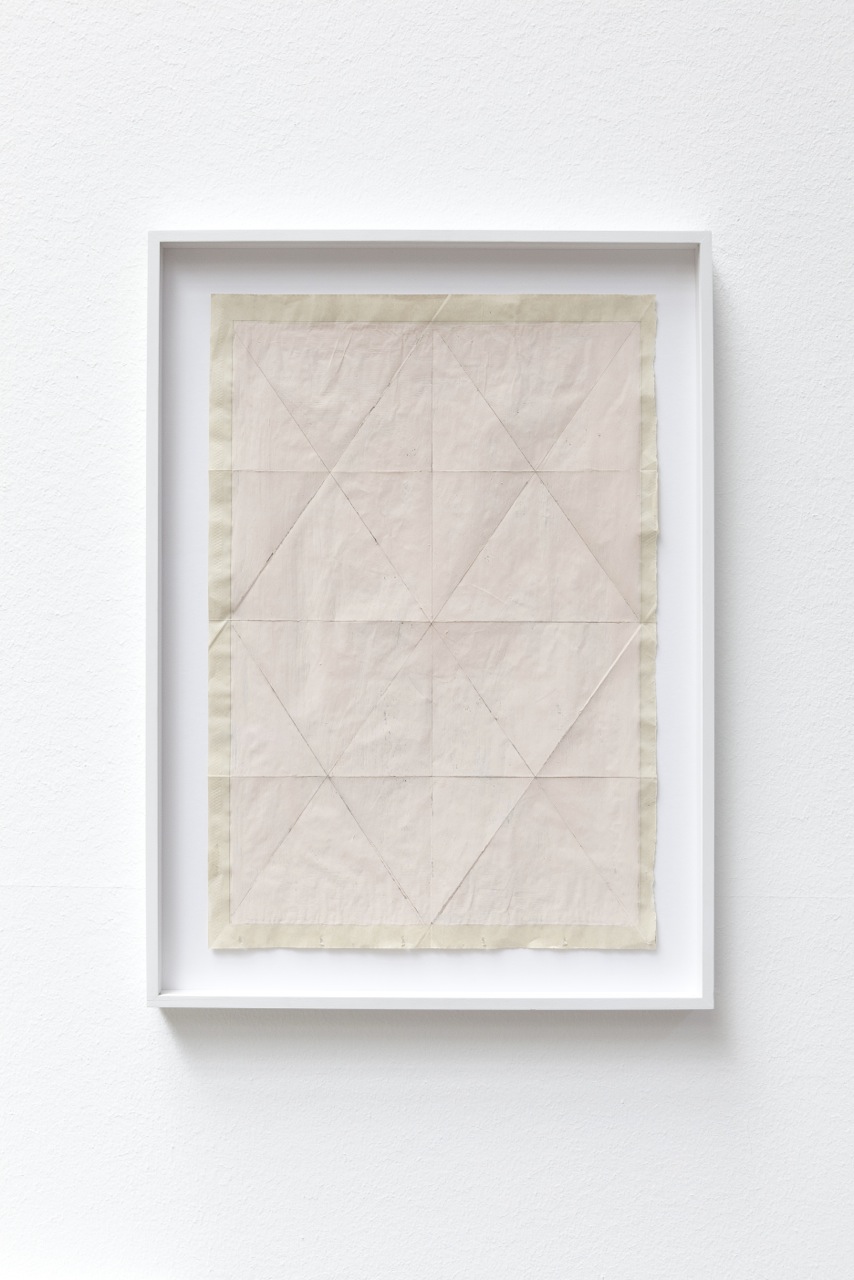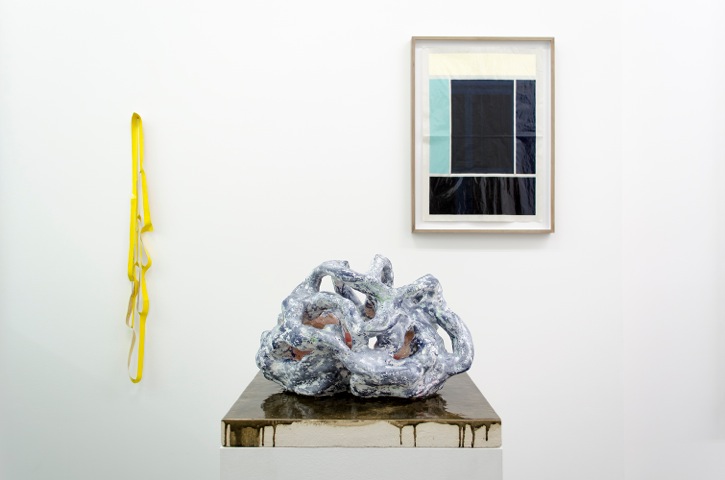12/07/12
Mike Meiré: Economy of Attention
Bartha Contemporary
6 July – 18 August 2012
Mike Meiré (born 1964) is something of a polymath: art director, artist, designer, architect, photographer, curator and editor. For the past 25 years, he has been running the design agency, Meiré and Meiré, along with his brother Marc, and his own creative work has continually challenged the boundaries between commercial design and art and craft.

One of his most successful, as well as controversial, editorial design projects was the redesign, in 2009-10, of the Neue Zürcher Zeitung (NZZ), which, begun in 1780, is one of the oldest newspapers still in print. Add to that the fact that it is Swiss (and Meiré is German), and that the previous most recent change had been way back in 1946 when the font was altered, and you begin to get an idea of the scale of the project!

For his fist solo show at Bartha Contemporary, Meiré has brought together a series of works on paper – or, more precisely, newsprint – directly related to this editorial experience. Taking pages from the NZZ, he has marked them up into the various grids that he employed for the redesign, and painted these in with varying colours of household lacquer from a DIY shop. Often applying several coats, the result is a palimpsest of matter and meaning, questioning the role of the media in both presenting and concealing the truth.

Many of the pages Meiré used were filled with obituaries, and he speaks of his overlaying of Rothko-esque colour fields in grid formation as something of a vanitas motif, reminding us of the banality and transience of all things earthly. Most of the blocks are opaque, with a contrast between matt and gloss paint; some, however, are transparent black washes, through which the original news text and images remain visible, as, for example, in Olympia (2012), where Manet’s taboo-breaking nude stares out at the viewer from behind the veil, further challenging conceptions of what ought to be revealed or concealed. Along these same lines, photocopied sheets of NZZ front pages lie scattered across the gallery floor, all from the same issue, all depicting Julian Assange, and thus unabashedly addressing the theme of the hiding of information – precisely what Meiré himself is doing by blocking out the newspapers’ texts.

There is something almost anthropomorphic about the pages, with Feelings (2011), in particular, having the appearance of a weather-worn palm – and, indeed, weather-worn it is, for Meiré, keen to test the limits of the paper, not only in terms of how much paint it could take, left this sheet out on the roof in Spain for several months, come rain or shine.

Two works in the exhibition are simply the frame of the page, with the grid squares cut out. They hang limp on the wall, from a nail, and bear the titles Schlaffes Grün (2012) and Schlaffes Gelb (“schlaff” translates as “droopy” or “limp”, “grün” and “gelb” as “green” and “yellow” respectively – the colours of the paint used on each frame). Echoing the obituary content of the pages’ past existence, they dangle lifeless like an empty corpse left behind post-mortem.

In amongst these works on paper stand four of Meiré’s ceramic sculptures. Although becoming more abstract of late, there is, at first, a seemingly strange contrast between these sexually explicit works and the anodyne newspaper pages. Describing these 3D pieces, Meiré says: “My organic ceramic sculptures are flowing forms associated with male and female genitals. At the outset of life, a human is not yet conclusively defined as man or woman. Thus these sculptures can be read as a kind of archaic battle of the sexes, following their instinct for survival.”[1] And it is thus that he describes his work as a whole: concerned with the basic theme of “life with its stations: birth, biography, death.”[2] As such, it is perhaps not so difficult to see the common thread between the works on paper and the sculptures after all: genitals, sexuality, procreation and birth; news stories, human interest and biography; obituaries, vanitas, transience, banality and death. Life with its stations, documented and displayed.
[1] Mike Meiré quoted in ‘Corpus Delicatus’ by Kathrin Luz, in Mike Meiré – Day In Day Out, Meurer Verlag: Cologne, 2010.
[2] ibid
Images:
Mike Meiré
Don’t Shoot The Messenger
Site specific Installation
Mike Meiré
Programed and Conditioned I – IV
2012
Lacquer-paint on newspaper
Each 55.5 x 38 cm
Courtesy Bartha Contemporary, London
© Mike Meiré
Mike Meiré
Parapsychological
2012
Lacquer-paint on newspaper
163 x 116 cm
Courtesy Bartha Contemporary, London
© Mike Meiré
Mike Meiré
Olympia
2012
Lacquer-paint on newspaper
55.5 x 38 cm
Courtesy Bartha Contemporary, London
© Mike Meiré
Mike Meiré
Feelings
2011
Lacquer-paint on newspaper
55.5 x 38 cm
Courtesy Bartha Contemporary, London
© Mike Meiré
Installation shot
Courtesy Bartha Contemporary, London
© Mike Meiré
Also published at: http://www.a-n.co.uk/interface/reviews/single/2296800